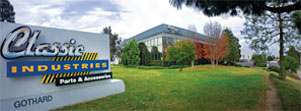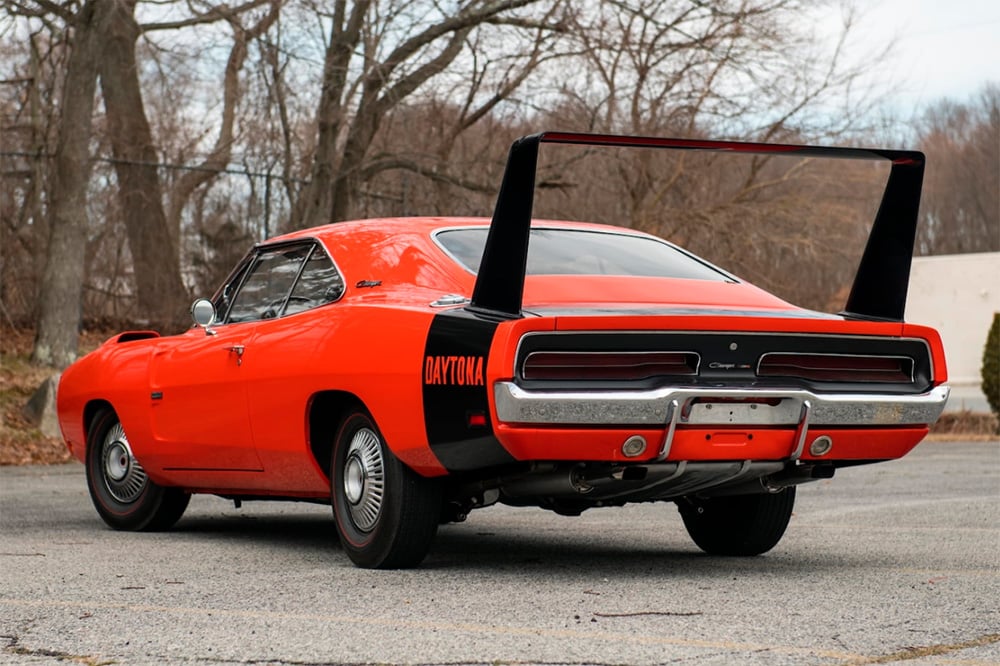
The late sixties were a groundbreaking time in America, from the Summer of Love to the ongoing space race. Automotive technology was moving quickly as well, with General Motors, Ford, and Chrysler all vying for top position in the peak of the muscle car era. No matter your preference, there was one pair of Mopar cars that captured every car enthusiast's attention: the Dodge Charger Daytona and the Plymouth Superbird. Some liked their sleek sheet metal and instantly-recognizable rear wings, while others thought they were too ostentatious, but everyone was transfixed by these race-ready Mopar "wing cars."
Dodge Charger Daytona & Plymouth Superbird History
As you may know, the Charger Daytona and Superbird weren't just built for looks, they were built for speed. Chrysler Corporation wanted to prove itself on the racetrack and outshine its other "Big Three" rivals, GM and Ford. Management believed that winning NASCAR races would bring more customers to their dealerships across the United States, so they invested a substantial amount of time and money into "homologation special" vehicles — in other words, race-focused versions of street cars that were built to comply with race series regulations.
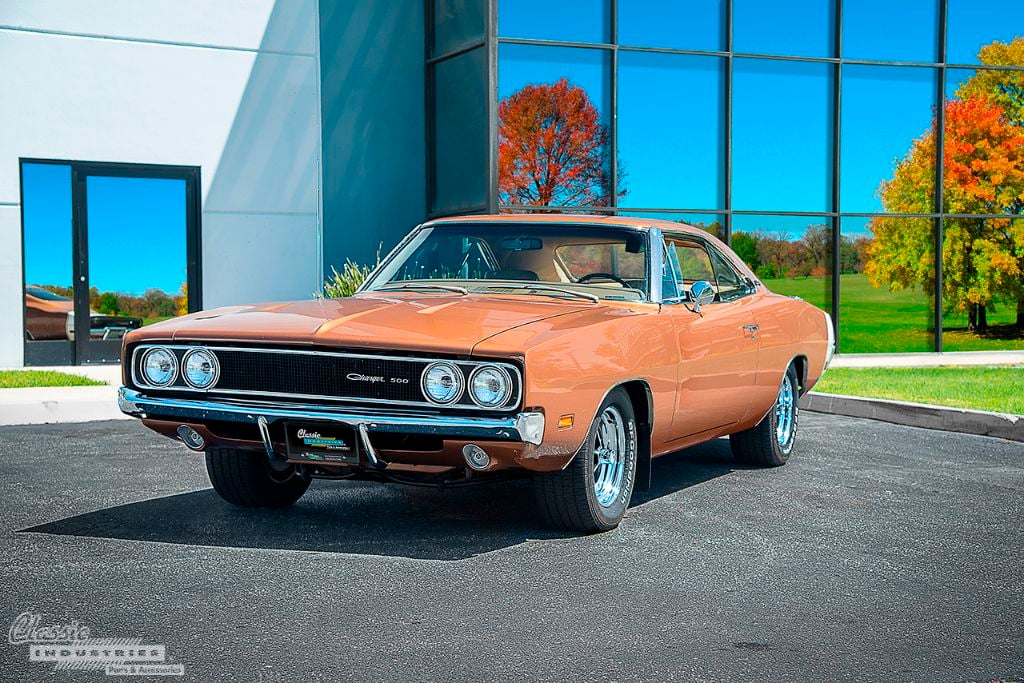
In 1969, NASCAR required manufacturers to sell at least 500 road-going examples of any car that was entered into its stock car races. This rule led to the name of a car built specifically for this purpose, and the vehicle that predated the "wing cars," the Charger 500. That special edition Charger featured subtle aerodynamic improvements to enhance top speed, such as a flush grille with fixed headlamps and a sleeker rear window. However, these modifications weren't enough to produce the results Chrysler had hoped for, so engineers went back to the drawing board.
This time, they pulled out all the stops and came up with a much more radical design.
1969 Dodge Charger Daytona
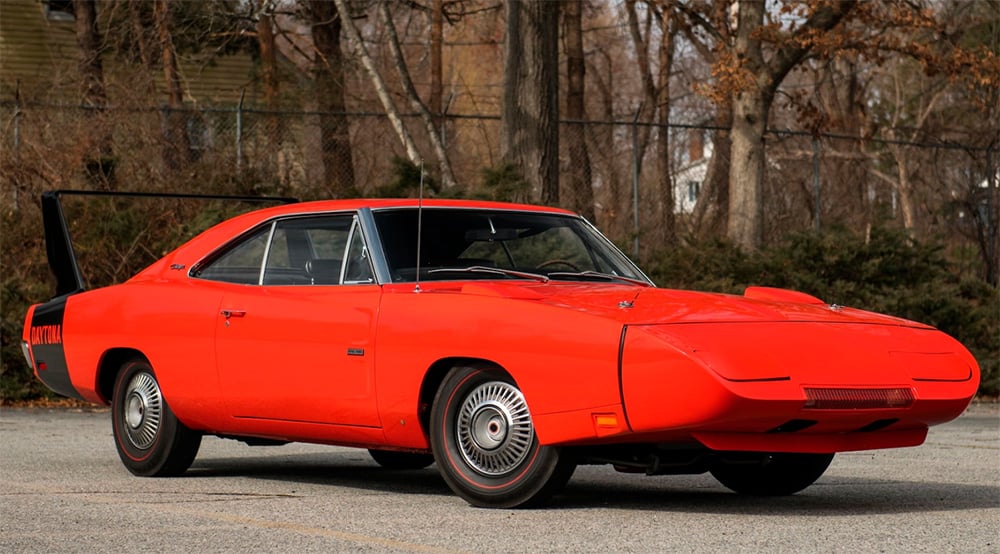
Above: Dodge Charger Daytona photos courtesy of Mecum Auctions
The 1969 Dodge Charger Daytona, sometimes called the Dodge Daytona, was created using a wind tunnel to eliminate aerodynamic obstructions. The flat nose was modified into a new cone-shaped front end, with a small grille opening for cooling and vacuum-actuated covers hiding the headlamps. The front fenders had rear-facing scoops covering holes through the sheet metal — this was initially said to be a way of increasing tire clearance, but that was reportedly a story told to keep NASCAR officials from disqualifying the vehicles for body modifications. In reality, the vents prevented air from getting trapped in the wheel wells, which would have increased drag.
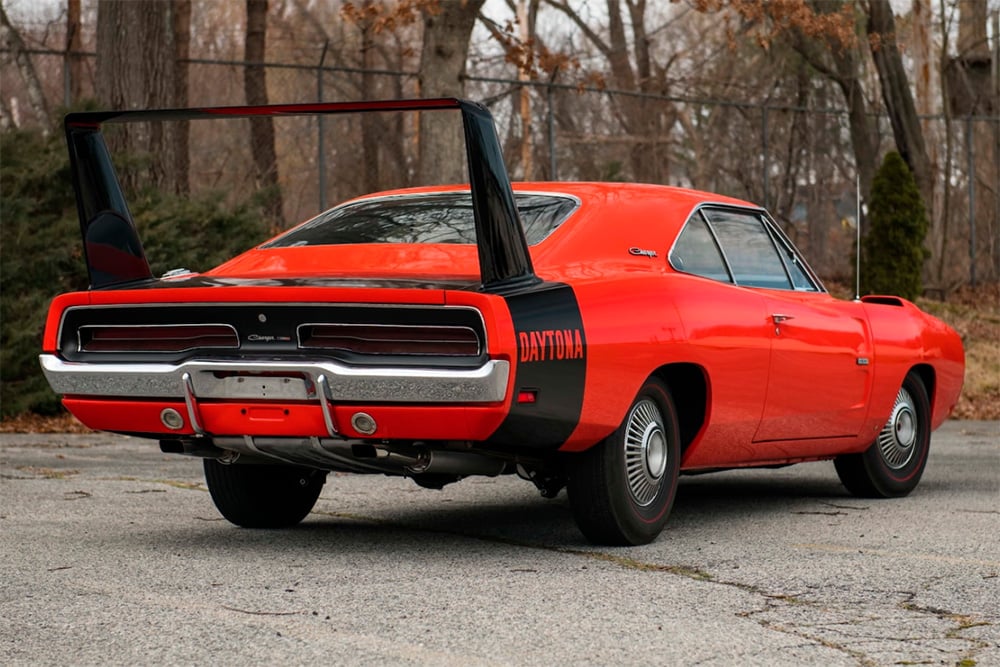
A 3-foot-tall wing was the Charger Daytona's most recognizable feature. Some rumors claim that the wing was tall to allow the trunk to open fully, but it was actually designed to reach into the less turbulent "clean" air above the car's roof to ensure maximum effectiveness. Trunk clearance was a helpful side effect. A large bumble-bee stripe with "Daytona" lettering was added to the rear quarter panels, further accenting the wing.
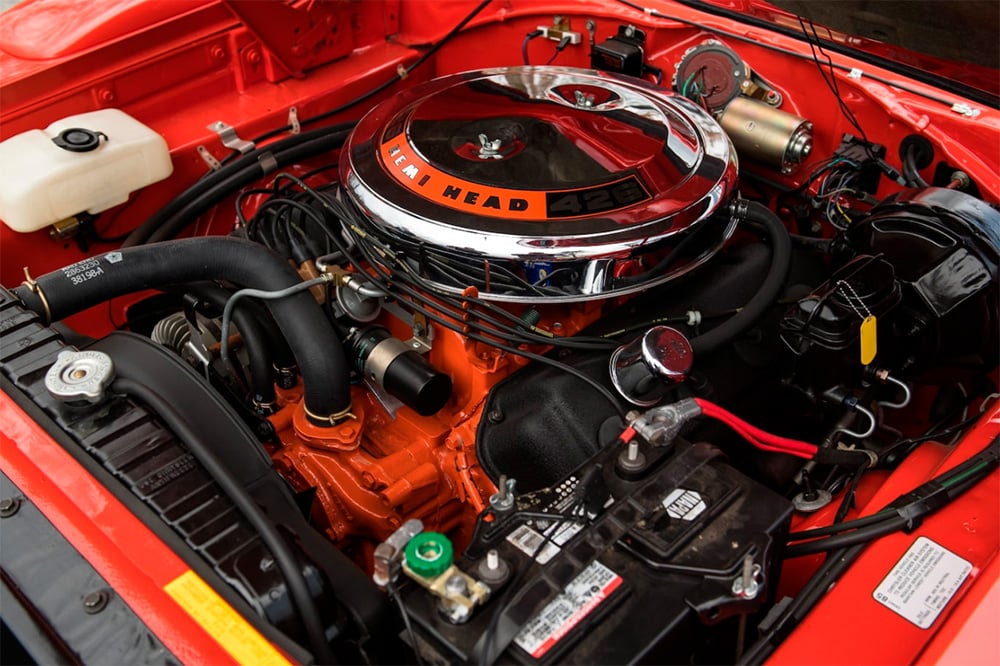
The results of the Charger Daytona spoke for themselves. It was the first NASCAR racecar to hit 200 miles per hour, and helped Chrysler win the prestigious Talladega 500 in 1969. Beyond the race track, Dodge sold 503 Charger Daytonas, powered by either a 440ci V8 (standard) or 426ci Hemi V8 (optional).
1970 Plymouth Superbird
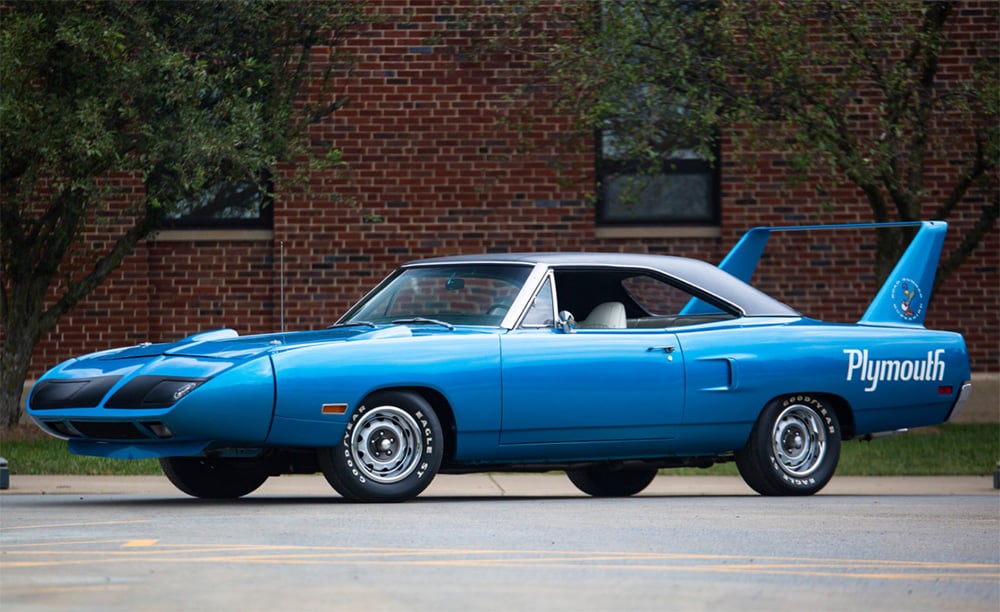
Above: Plymouth Superbird photos courtesy of Mecum Auctions
Technically, the Plymouth Superbird should be called the Plymouth Road Runner Superbird, since that's what it was based on. After seeing the success of the Charger Daytona, Plymouth wanted a piece of the action, so it developed its own "wing car" for the 1970 model year. However, NASCAR changed its homologation rules for 1970 — instead of 500 vehicles, Plymouth had to build one Superbird for every two dealerships in the United States. That meant a minimum of 1,920 cars; Plymouth would reportedly produce 1,935.
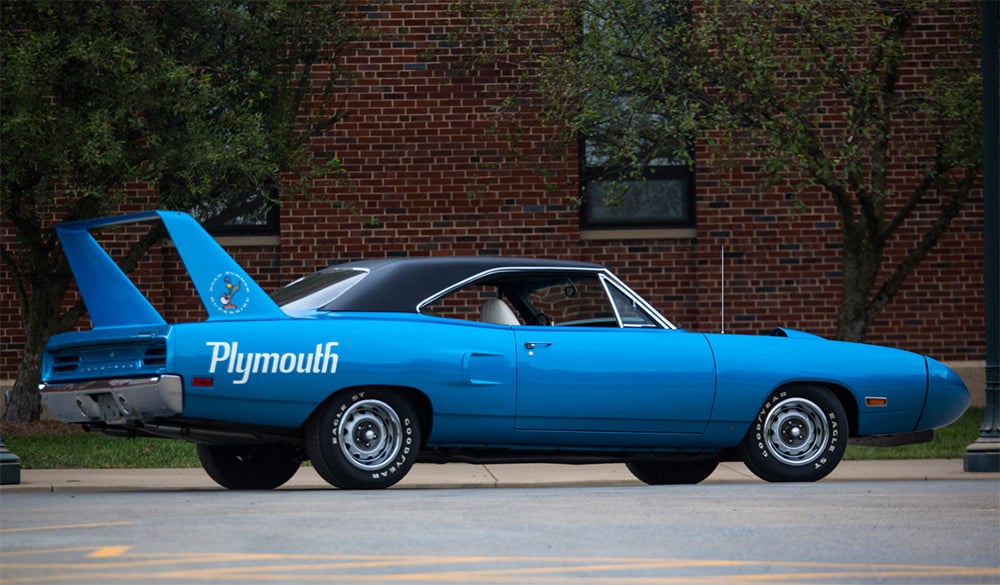
At a glance, the Superbird looks very similar to the Charger Daytona, but the nose cone and wing are totally different. The special nose was an inch longer and less angular than the Daytona's, and the trunk spoiler sat at a less-steep angle. The Superbird featured a vinyl top to hide the welds of the special flush rear window cap (the Daytona’s was blended into the body, which was costly) and the fender vents of the Superbird were no longer functional as they were on the Daytona. The opening in the nose cone was also widened to help alleviate the overheating problems that Daytona models experienced.
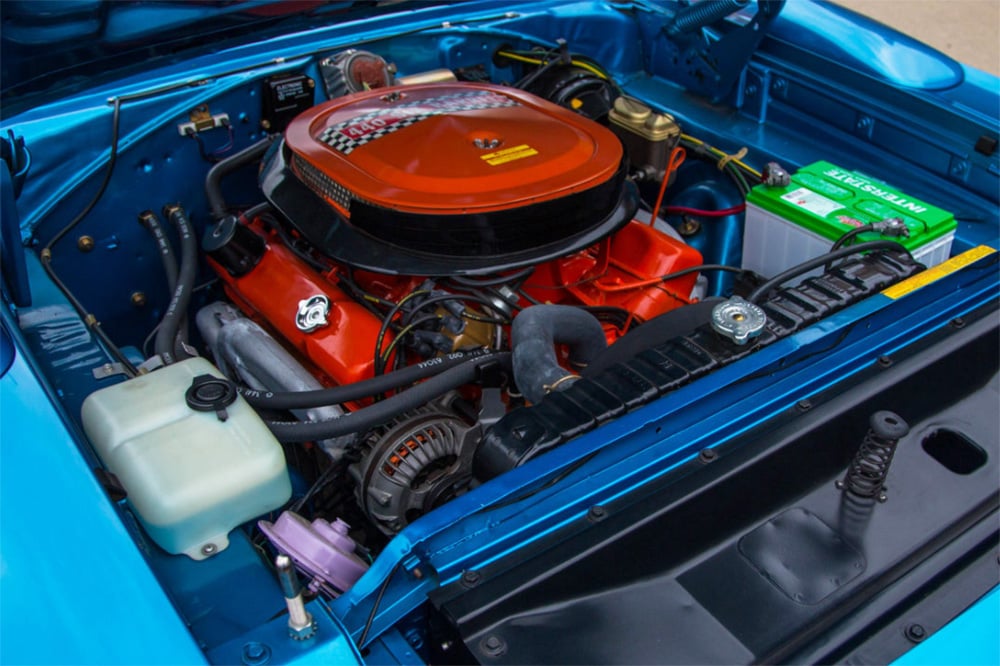
Superbirds were available with three different engines. The most popular was the basic 440 V8 with a single four-barrel carburetor rated at 375 bhp. Next up was the 440 Six Barrel rated at 390 bhp. At the top, and ordered by just 93 buyers, was the mighty 426 Hemi, rated at 425 bhp.
Despite the success of the Superbird on the track, it didn't sell well as a road-going vehicle. Also, the increased minimum production requirement meant that Plymouth had to find more than three times as many buyers as Dodge did.
The End of the Mopar Wing Cars
In 1971, NASCAR implemented a new rule that spelled the end of the "wing cars." Regulators felt that the 200mph or greater top speed of these vehicles was too much of a safety risk, given the tire, suspension, and safety technology that was available at the time. As a result, "aero cars" such as the Dodge Charger Daytona and Plymouth Superbird would be limited to either an engine displacement of 305ci or a higher weight requirement. These rules made the category unappealing, and caused manufacturers to seek a different approach to win races.
Looking for Dodge and Plymouth Restoration Parts?
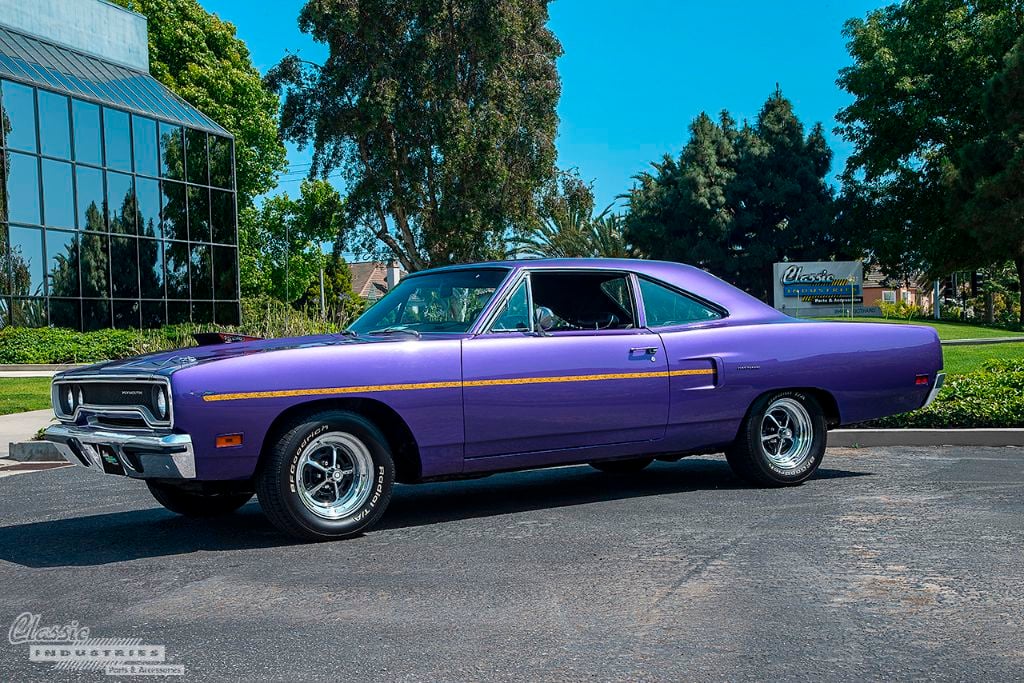
Whether you're lucky enough to own an original Charger Daytona or Plymouth Superbird, or you have a street-oriented muscle car such as the Charger or Road Runner, Classic Industries can help you find the restoration parts you need. Our Mopar catalog is full of original-style parts for Dodge and Plymouth vehicles, including the "wing cars." Click the button below to get a free, full-color Mopar restoration parts catalog.




